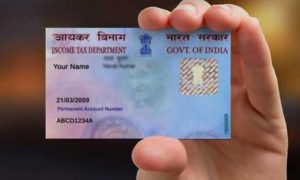While the intention has been help middle and lower-income sections buy houses by giving sops, tax benefits have been pruned systematically
Encouraging residential housing has been a priority for successive governments at the centre and the Narendra Modi government, which assumed office in May 2014, too, focused on this sector. A host of tax incentives were given to encourage people to buy houses. Besides, the Modi-government’s vision of ‘Housing for all by 2022’ has created a buzz around ‘affordable housing.’ Broadly, the tax incentives and changes for those of us who own or rent properties can be classified under three heads.
Take a home loan, get tax benefits
When we start repaying a home loan, the interest component is typically higher in the initial years. The first budget of the National Democratic Alliance (NDA) in June 2014 offered relief to home loan borrowers. The late Arun Jaitley, who was the then finance minister, increased the tax deduction limit on account of interest on home loan in respect of self-occupied house property from the prevailing Rs 1.5 lakh to Rs 2 lakh, under Section 24. The principal component of your equated monthly instalment (EMI) gets you a tax deduction under Section 80C for up to Rs 1.5 lakh.
To give impetus to house purchase for those in the middle and lower-income brackets, the government introduced a new Section 80EE in Budget 2016. If you buy a property for the first time, and take a home loan to fund it, you can claim an additional deduction of up to Rs 50,000 per annum against interest paid on home loan. The caveat: your home loan should be up to Rs 35 lakh and sanctioned in the financial year 2016-17 for a house not costing not more than Rs 50 lakh. This deduction is over and above the Rs 2 lakh deduction available under Section 24.
In Budget 2019, the government introduced an additional deduction Under Section 80EEA for the first time home buyer on repayment of interest up to Rs 1.5 lakh for purchase of a residential unit costing up to Rs 45 lakh. The home loan must have been availed between April 1, 2019 and March 31, 2020. Since this deduction is available only to first time home buyers, you could not avail of Section 80 EE tax deduction benefits.
Thus, the total deduction for repayment of interest on housing loan can go up to Rs 3.5 lakh (Rs 2 lakh under Section 24 and Rs 1.5 lakh under the new Section 80EEA).
If, however, you stay on rent, you can claim house rental allowance (HRA) benefits provided by your employer. If your office doesn’t provide you HRA benefits, then Budget 2016 increased the deduction under section 80GG from Rs 24,000 per annum to Rs 60,000, to provide relief to those who live in rented houses, but do not get HRA.
Sale of housing property
Selling a property at a profit entails capital gains tax. In Budget 2017, the threshold to claim long-term capital gains tax was reduced to two years, down from three years earlier. The long-term capital gains (LTCG) tax from selling house property is 20 percent. To ease the tax burden further, Budget 2017 also changed the base year for calculating LTCG from 1981 to 2001 to provide better indexation benefit to people who sell property. A higher indexation lifts the cost price up to factor in inflation. This reduces the gains, at least on paper, and your taxes also go down.
But income-tax rules also provide you relief from paying LTCG tax, if you reinvest the sale proceeds. But the rules have been tightened over the years. Until 2014, under section 54 and section 54F, capital gains arising from transfer of assets were exempt from tax upon reinvestment in residential houses within a specified timeframe. A new property had to be bought in two years or a fresh house constructed in three years, without any cap on the number of properties. Budget 2014 limited the exemption to a single residential house for reinvestment purposes. And if you chose to reinvest the proceeds in specified bonds (under section 54EC) instead, then relief is given to the investment amount, subject to a maximum of Rs 50 lakh.
Budget 2020 allowed reinvestment in two residential homes for a tax payer having capital gains of up to Rs 2 crore.
Meanwhile, Budget 2017 capped the maximum loss that can be derived from a house property and set off against other sources of income. Since then, a homeowner is allowed to set off losses only up to Rs2 lakh from income under the head ‘income from house property,’ earlier there was no such limit. However, where the loss amount is more than Rs2 lakh, it can be carried forward for 8 subsequent years for set off.
Budget 2018 gave relief to home buyers and sellers who were looking to buy or sell properties in localities where the circle rate was higher than the market value. No additional tax will now be payable by the sellers and buyers if the difference between the ‘actual sale price of a property’ and its circle rate is less than 5 percent.
Typically, buyers have to pay additional stamp duty on registration value, since it cannot be lower than the circle rate. Also, the difference —circle rate less market rate—attracts tax under section 56(2) of the Income-tax Act, 1961, as it is considered to be a profit for the buyer. For a seller, capital gains and tax liability increase because capital gains have to be calculated based on the stamp value of the property under section 50C of the Act, even if the selling price is lower than the circle rate. This limit has been recently increased to 20 per cent to minimize hardship in real estate transactions, as part of the COVID-19 relief package.
Affordable housing
To help the lower income group to own houses, the government gave special impetus in Budget 2017, by giving it an infrastructure status. This enables builders to get special tax benefits if they build houses in this segment.It remains to be seen if Budget 2021 will continue in the same trajectory as seen in the previous years, or take a different path.





































